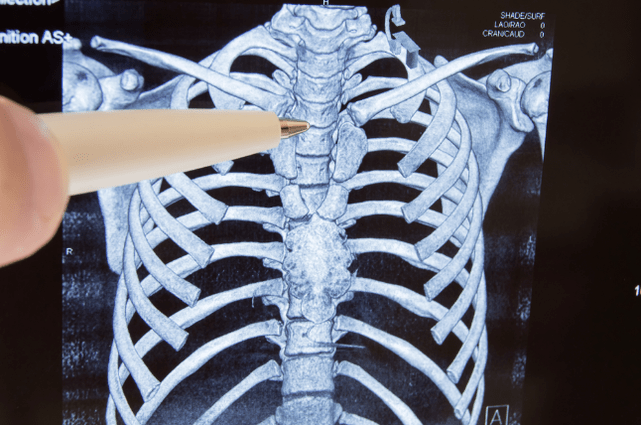
Osteochondrosis is a spine disease where the intervertebral disks (and then the body of the vertebrae, joints and ligaments) lose their ability to normal functioning.
The cause of osteochondrosis is currently considered a set of factors that affect the spine during a person's life.A further risk of osteochondrosis develops the resulting injuries of the spine as well as disruption of attitude.Some patients notice the connection between the disease and hypothermia.
In practice it is usual to consider
- cervical osteocondrosis,
- Osteocondrosis of the thorax and
- Lumbar spine.
Separately, it should be noted that osteochondrosis is common, characterized by damage to multiple spine at once.
The most common are the cervicals and thoracic forms, as it is these spine departments that are subject to the greatest loads.
Symptoms of osteocondrosis
With osteocondrosis, patients describe symptoms as:
- Paroxysmal or shooting pain in the spine affected by osteocondrosis;
- increased pain after physical exertion as well as in the morning;
- Pain can be given to the neck, arm or legs as well as in the chest;
- Feeling of crunch when performing twisting.
Osteochondrosis is also characterized by symptoms of a neurological nature on the affected side:
- Partial violations of movements (palsy);
- unpleasant sensations in the form of goosebumps, tingling (paresthesia);
- In palpation, the tension of the muscles corresponding to the affected department is determined.
The disease begins and develops gradually, not sharply.
It is necessary to distinguish osteocondrosis of the spine from coronary heart disease (with coronary heart disease, the occurrence of pain is not associated with physical activity, but is due to side factors: cough, prolonged seat).
Treatment
The same symptoms may be indicative of various diseases and the disease may not occur according to the textbook.Don't try to be treated yourself - see your doctor.
Osteochondrosis therapy always requires an integrated approach.In the treatment, the attention of doctors as a therapist, rheumatologist, neuropathologist and physiotherapist is needed.The treatment of osteochondrosis of the spine depends on the location, the prevailing symptoms and the severity of the disease.
Conservative therapy is aimed at eliminating pain symptoms as well as recovering the normal function of the spine.
Rational nutrition for osteocondrosis facilitates the patient's condition greatly and promotes more effective therapy.Read more about the principles of nutrition for osteocondrosis in our separate article.
About 10% of patients are sent for surgical treatment.The absolute indicator of surgical intervention in osteochondrosis is the appearance of neurological disorders due to the squeezing of the spinal cord itself.
Further indicators of surgical treatment of osteochondrosis are considered as follows:
- Long -term periodic attacks of pain;
- Increased mobility and suspicion of spine instability;
- Inefficiency of drug therapy for 3 months;
- Pronounced disorders that prevent the patient from living a full life.
Methods for surgical treatment
Surgical interventions with minimal trauma:
- Enzyme preparations are inserted into the intervertebral disk after firing for the purpose of the scene of the core and the fibrous ring on the disk.
- Puncture of nucleotomy - Interrogation of the intervertebral disc to remove part of the venom.
- The reception disk - a drug is introduced into the intervertebral disk that blocks the sensitivity of the nerve endings.
The remaining methods of surgical treatment of osteochondrosis of the spine are less gentle.These include:
- Full or partial removal of the intervertebral disk or its hernia - this operation is aimed at reducing compression symptoms.
- Protetics of the intervertebral discs - the main task is to fix the affected spines.
Operational methods of treating osteochondrosis of the spine provide a prognosis for complete improvement in only 50% of cases.
With timely treatment, the prognosis of life is almost always favorable, but the prognosis of work ability can be different due to a number of factors.
Exercises for osteochondrosis
Exercise 1.
Turn your head forward while pressing the forehead with woven fingers.Press close to the fingers of the back of the head and whiskey - left, right.The head counteracts the pressure and hands of the hands - the pressure of the head.Use 10 seconds.for each movement.
Exercise 2.
Put the tips of four fingers on the pan against each other, gently press the skin with the entire palm and with soft traction movements stretch it for 10-40 seconds.We can do the same stretch at the temple in the longitudinal and transverse direction.The same - on the ear - to stretch it in all directions, especially the lobe.To.You improve blood circulation in areas rich in biologically active points.
Exercise 3.
This type of massage improves blood flow in jugular veins and the brain's nutrition improves.Sit exactly, back is straight.Slowly take your head back, help with your hand, press your chin back and up.You can slowly turn your head slightly to the left and right.Stay in this position for about one minute.For kids is 10 seconds enough.
Exercise 4.
This exercise improves the function of the cervical nervous plexus.Sit exactly, back is straight.Go slow to your head forward and try to touch your chest chin.Put the woven fingers on the back of the head, press forward and up and lift the back of the head.Sit like this for about a minute.After 15 minutes you can repeat.
Exercise 5.
Lift up your shoulders and try to get it to your ears, lower, free, faster - for 15 seconds.Now alternately - one shoulder up, the other is down, also 15 seconds.Pull the cervical ridge with your palms.













































